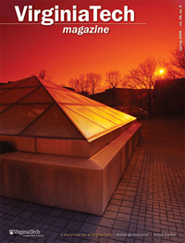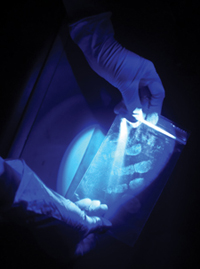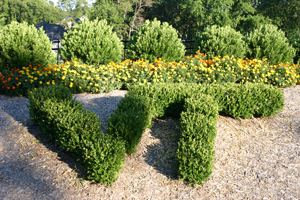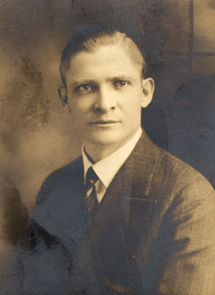|
  Extreme magazine makeover Extreme magazine makeover
I wanted to share my opinion about the new look of Virginia Tech Magazine: I think it's spectacular. I've received issues in the past but was not terribly inclined to stop and read through them. The spring issue, however, was particularly stunning, and I read through the entire magazine--quite a page-turner. Great job!
Beth A. Verchinski '98 | Beltsville, Md.
I think the redesign of the magazine looks great. Very clean, professional, and well organized. It really gives the university an upscale image that communicates the high level of education that can be obtained at Virginia Tech. Thank you!
Laura Lloyd-Henry '92, M.Arch. '98 | Germantown, Md.
 Honest and humble Honest and humble
 |
|
I would like to add that the Roger Simmons who returned his post office box key after traveling with it for 50 years [see Letters to the Editor, Summer 2006 issue] is, I believe, none other than the same Roger Simmons who was a member of the Virginia Tech 1952-55 football teams. I remember him from my days as a sophomore manager of the football team in 1954 and then as a resident in the athletic company dorm where all athletes (and managers), including those who were also in ROTC, were housed. Simmons is now a retired Air Force officer who wears several stars on his shoulders after a very distinguished career.
Harry Daughtry '57 | Martinsville, Va.
Editor's note: We did some fact-checking and found that it is indeed the same Roger Simmons. Good recall!
|
 A forensic find A forensic find
 |
|
In looking over your list of folks who represent Virginia Tech in forensic science, I noticed a glaring omission: The top forensic dentist in the commonwealth is a Hokie. Dr. Alvin W. "Pat" Kagey [general agriculture '56] has given seminars all over the United States and participated in a great number of high-profile trials, many of which would be familiar to readers. Most of the commonwealth's attorneys know him as "Pat" or call him "Quincy."
Dr. Kagey works out of the Western Lab in Roanoke, Va., and is the first person to be called in on investigations of airplane crashes, bad automobile wrecks, fires, and human remains found by hunters. I think he should certainly be noted as one of Virginia Tech's CSI professionals.
Ellsworth Snyder '65 | Roanoke, Va.
Editor's note: Dr. Kagey is nationally known for his work in forensic dentistry. One prominent example is Kagey's research and testimony in the case against sports broadcaster Marv Albert, who had been accused of sexually assaulting a female companion. During the 1997 trial, after a bite mark on the woman's back was identified as having been made by Albert, he pled guilty.
|
 Hedging out the competition Hedging out the competition
| Both of our children are graduates of the Pamplin College of Business: Amy Distler Wernecke '92 and John Distler '97. Virginia Tech football is still a big part of our social agenda and, as season ticket holders, we travel down to Blacksburg for several games a year.
We all live in the Annapolis-Baltimore area and, as you can imagine, are in the heart of "Turtle" country. We have lots of ACC representation in our community (U.Md., Ga. Tech, U.Va., Duke, and Virginia Tech) so spirits run high in the fall. To do our part to represent Virginia Tech in "enemy territory," we are cultivating our own version of the VT bush on campus to remind visitors of the Hokies--all in fun, of course. We only started it two years ago and it is a work in progress. Go, Hokies!
Dennis and Ann Distler | Arnold, Md.
|
|
 |
 Architect of a college Architect of a college
| I noted with great satisfaction the citation of the Test of Time Award for Cowgill Hall by the Virginia Society of Architects [see News & Research, Summer 2006]. So many items in the magazine would lead one to believe that architecture was started at Tech by the establishment of the college [in 1965]. I suspect that I am the only alumnus still around who had the privilege to be a student of Clinton Cowgill and later to serve as a faculty member under him until he retired. The architect of Cowgill Hall was, as noted, Henry V. Shriver '51, M.S. '54 who was a student of mine and of Professor Cowgill. The excellence of Cowgill Hall is evidence that good architectural education was present before the establishment of the college.
In 1928, Cowgill was hired to introduce architecture, the only curriculum in the arts at what was still essentially an agricultural and mechanical college. By necessity, the department teaching architecture was placed under the engineering college, and by law, it had to offer a bachelor's and a master's degree in architectural engineering. Students had to take the same mathematics and science courses as the engineers, and our courses in building equipment and structures were taught by engineering faculty!
Before Cowgill retired, we were pleased to see the approval of the five-year bachelor of architecture degree, the establishment of the building construction curriculum under Bill Favrao--who will soon be honored by a building in his name--and the introduction of regional planning. I was asked to establish courses in lighting and heating in the department. Later, I taught at the University of Florida, and I have just now returned to Blacksburg.
|
|
 Professor Clinton Cowgill
Professor Clinton Cowgill
|
|
|
The College of Architecture and Urban Studies owes a considerable debt to the able administration of Clinton Cowgill for his skill in developing the firm base on which the college was founded. And I am pleased to note the extraordinary way the college has followed his lead to be among the best of its kind.
Bertram Kinzey Jr. '42, M.S. '43 | Blacksburg, Va.
Editor’s note: For more on Professor Clinton Cowgill and Cowgill Hall, please read this issue’s In Retrospect.
|
 Correction | Contrary to what was implied in the Summer 2006 In Retrospect article about Ella Agnew and Agnew Hall, the building also housed the Department of Communication for more than two decades. Correction | Contrary to what was implied in the Summer 2006 In Retrospect article about Ella Agnew and Agnew Hall, the building also housed the Department of Communication for more than two decades.
|





